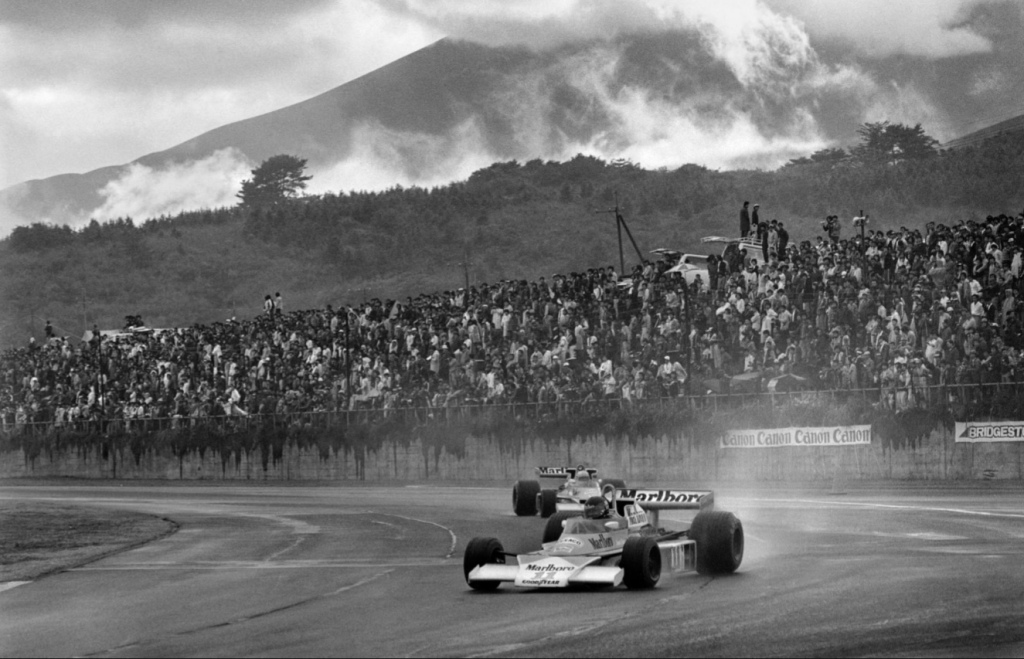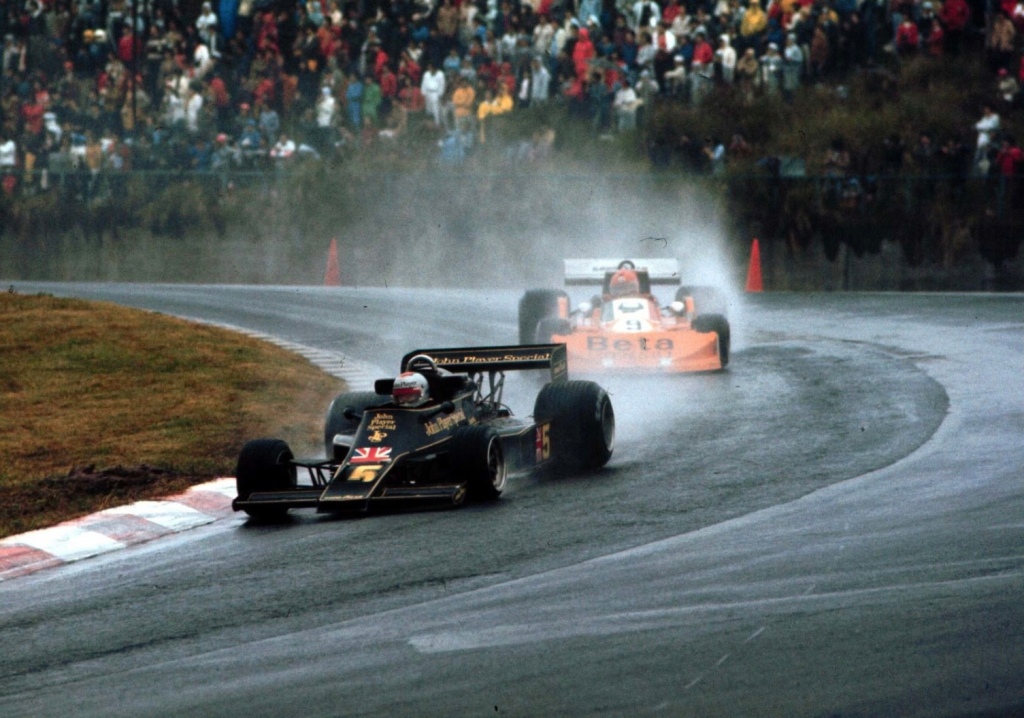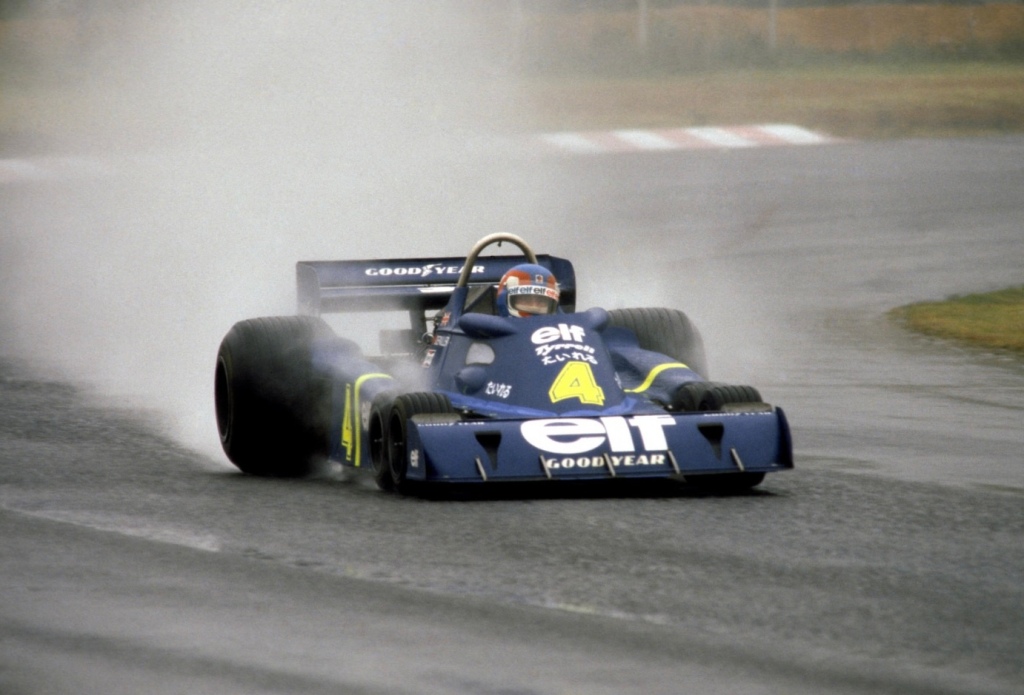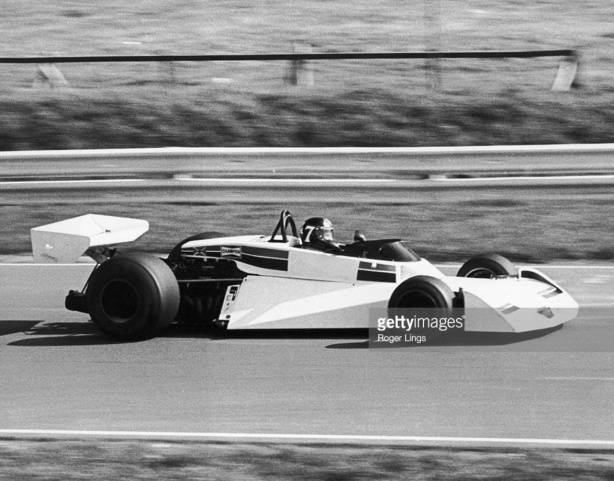
Ian Smiths’ wonderful shot shows James Hunt balancing his Elfin MR8B Chev on the turn into the Winton Esses, 29 October 1978, his final race win. Winton ‘Rose City 10000’. (Ian Smith/ autopics.com.au)
James Hunt wins the ‘Rose City 1000’ at Winton Raceway, Benalla, Victoria, Australia in October 1978…

James Hunt was a hit with the spectators, media, and the Elfin Team, a professional in every respect. ‘Kojak’, McLaren mechanic Ray Grant to Hunts’ right. Winton paddock. (oldracephotos.com)
Racing in Australia…
Hunt enjoyed his interlude in Australia, he was frustrated with his McLaren M26 in F1, McLaren having lost their ‘design mojo’, the Colin Chapman/Peter Wright ground effects Lotus 78 and 79 dominating the 1977 and 1978 seasons. Mario Andretti easily won the World Drivers Championship in 1978, Hunt finished thirteenth, and failed to complete races on nine occasions.

In search of grip, downforce…the ground effect Lotus 79 got something for nothing whilst everybody else played catch-up in 1977-8. Hunt in his bi-winged McLaren M26 Ford, Spanish GP 1978. Andrettis’ Lotus 79 won from pole, James a lap down in 6th place (pinterest)
James joined Wolf for 1979, optimistic that his old mate and designer from the Hesketh days, Harvey Postlethwaite could ‘produce the good’s, but frustrated with the nature of ground effect cars generally, and the lack of competitiveness of the Wolf WR9 specifically, retired from racing at Monaco.
So, we were lucky to see the first recent World Champion in Australia at all, his late 1978 Winton victory, in fact his last race win of any kind!
The whole exercise was bizarre really, the Winton event an annual stand alone race outside the ‘Gold Star’ the then prestigious series to decide Australia’s Champion Driver, the Australian National Championship Formula at the time was Formula 5000, for single seaters powered by 500BHP production based V8’s.
‘Kenlaw Promotions’ Ken Campbell, together with the Benalla Auto Club, the Winton promoter, secured Hunt for $30000, half paid up front and half after he raced plus expenses, a lot of money at the time. Elfin were to be paid $10000 for supply of the car ‘end to end’, that is prepared and maintained at the circuit.
A huge amount of publicity was generated by Hunts presence in Australia, attendances at the circuit on the weekend, of around 15000 people on raceday reflective of interest in both his driving talent and flamboyant tabloid lifestyle. He arrived ‘pissed’ but still handled the media upon arrival with aplomb! Hunts’ entourage included his brother Peter, his McLaren mechanic Ray Grant, and a friend.
The car was entirely prepared by the Elfin crew, lead by Peter Fowler, based at racer Bryan Thomsons’ workshop in nearby Shepparton…Hunt arrived in Australia after the season ending Canadian GP, no doubt the experience in country Victoria was a reminder of his English Club Racing roots!
John Lanyon in the ‘Elfin Bible’ (‘Australia’s Elfin Sports And Racing Cars’ by John Blanden & Barry Catford) outlines in detail how professional and easy Hunt was to deal with, treating the car, team and Garrie Cooper with a great deal of respect..
Elfin MR8 Chev…

Garrie Cooper debuting the brand new Elfin MR8 Chev # ‘8761’ at the Sandown round of the ‘Rothmans Series’, February 1976. Chisel nose and relative size of the car a contrast to the smaller MR5/6. No airbox at this stage, side deformable structure nicely integrated into side, rearward mounted radiators. Car beautifully finished and detailed, suspension all nickel plated and gleaming in the Summer sun…
Elfin were Australia’s foremost manufacturer of racing cars, Garrie Coopers small concern in Edwardstown, South Australia producing well over 250 cars and over 20 different models from the late 1950’s, until the late 1980’s after his death. The company still produces road sports cars.
The MR8 incorporated all of the knowledge Cooper accumulated in building ‘big bangers’ ; the 400, ME5, and MS7 V8 Sports Racers and particularly the MR5 and MR6 F5000 cars.
Elfin built 4 MR5 Repco Holden engined cars; ‘works cars’ for Cooper and John McCormack and customer cars for Max Stewart and John Walker. The MR6 was bespoke for McCormack, and designed around the light, aluminium Repco Leyland ‘P76′ V8.
Consistent and dogged development of McCormacks MR5 and MR6, by both Elfin and McCormacks’ own team based ‘around the corner’ from the Elfin factory, the MR6 once fitted with a Repco Holden engine, produced race and championship winning cars.
But the bar was raised with the Lola T330/332, so Cooper needed to produce something special for 1976.
Garrie considered using Repco Holdens again but Repco had long withdrawn from racing so the cost and ongoing development of the small block Chev made that the sensible choice, his first car powered by an ex-Bob Muir Peter Molloy ‘prepped Chev.
The chassis was a conventional aluminium monocoque made of 16 and 18 gauge aluminium, with tubular steel sub frames used front and rear and a roll bar braced fore and aft.
Familiar Elfin rear suspension practice was followed with twin radius rods, twin parallel lower links, single top link, and coil spring dampers. Front suspension was by wishbones top and bottom, again using coil spring damper units, alloy Konis front and rear, and adjustable roll bars front and rear.

MR8 # ‘8761’ rear suspension. Complex fabrications supports conventional set up of single top link, twin parallel lower links, twin radius rods , and combined coil spring damper (Koni) units, stood up vertically as was the trend of the day. Battery mounted at rear in ‘single post’ rear wing support (Peter Brennan Collection)
Front and rear track was 1625mm, similar to the T330/2, and the wheelbase 2640mm, 30mm longer than the MR5.
A special Elfin casting replaced the standard Hewland DG300 gearbox item and incorporated mounts for both the rear wing and attachment points for the rear suspension subframe.
Brakes were Lockheed and steering Elfins own rack & pinion.
The aerodynamics of the great looking car were a departure from the full-width ‘Tyrrell Nose’ of the MR5/6 to the chisel nose setup Cooper had experimented with on his MR5B.
Three MR8’s were built, one each in 1976, 77′ and ’78 the cars raced by champion drivers including Vern Schuppan, John Bowe, Larry Perkins, Bruce Allison, Didier Pironi, and of course Hunt…
Garrie Cooper also raced the cars, his unique contribution as designer/builder/driver critical in keeping the cars competitive throughout this long period.
Hunts car was the Reg Orr owned MR8B Chev, chassis # 8783, the last of the MR8’s built.
The very last Elfin F5000, the only bespoke ground effect Fornula 5000 car built in the world, perhaps the very last F5000 car built in the world, the MR9 Chev is a story for another time…

Front suspension conventional unequal length upper and lower wishbones, coil spring/ damper unit and adjustable roll bar. Cast magnesium Elfin uprights front and rear. Car built by the same team but to my mind the MR8 was built to a higher standard of finish than MR5/6 (Peter Brennan Collection)
The 1978 ‘Rose City 10000’…
On the Wednesday and Thursday prior to the meeting the car was adjusted to suit Hunt; seat, pedals, steering, gear shift and a small lever added to the belts to aid exit.
He covered six laps on Thursday but the circuit was dirty and wet Friday, so Hunts first serious drive of the car was on Saturday.
Garrie Coopers diary records as follows ‘ James was very impressive right from the start being very smooth and precise and getting the power on noticeably earlier than the others. Right throughout practice fine adjustments were made to the car to balance it as required. He was always adamant when he pulled into the pits that he see the times he recorded and those of his nearest rivals . After making an adjustment he would go out and improve on his time. This continued through the practice sessions until he finished up putting a string of low 55 second laps…however he seemed to pace himself to the opposition and could have gone quicker again. At no time did he appear ragged or put a wheel off the bitumen…’
Hunt told the local media the Elfin was ‘ A lot better than the Eagle I drove. (He raced an eagle for Dan Gurney in 1974) It seems a good car, it is very forgiving and drives a lot easier. It’s good to have a competitive car for a change. It’s a nice feeling!’ referring to his hapless 1978 season.
Hunt was on pole with a 55 second lap, John McCormack next on 55.7, the race was easily won by Hunt with Alfie Costanzo second around 40 seconds behind in his Lola T332. Mac was credited with the fastest lap, Hunt pacing himself and taking it easy on the car. John Lanyon recalls ‘There was no wear and tear on the car at all. Nothing at all. You would think he hadn’t taken it off the truck. That’s both after practice and the race. he brought the car back in beautiful condition.’
Whilst Hunt was paid, the race was a financial disaster for the Benalla Auto Club and Elfin who were only paid $1000 of the $10000 contracted…still, Barry Catford observed in his book that the win was the fillip the team needed for 1979 after a tough season including Garrie Coopers horrible, but lucky escape from the accident caused by his wing mount failure at Sandown shortly before Hunts’ visit.

How Good Was the Elfin MR8 ?…
Its interesting to speculate about how good the MR8 was in relation to its ‘competitor set’ ; the Lola T332 (first model 1974), Lola T400 (1975), Chevron B37 (1976) , Lola T430(1976), Matich A53 (1974) etc.
Two drivers raced the Elfin and other F5000’s, Vern Schuppan and Bruce Allison.
There are various quotes in the ‘Elfin Bible’ of Schuppan comparing the MR8 favourably with the Lola T332 but later in life he seems to have changed his view.
Despite buying an MR8 to use as a Single-Seater Can Am car, having raced both the Lola T332 and MR8, Schuppan rated the Lola T332 the better car, which begs the question, why buy the Elfin if you thought the Lola the better car?
In any event Vern observes’…The Lola T332 was certainly significantly better than the Elfin MR8, Gurneys Eagle, the Trojan T101 0r the Chevron B28’s. The Chevron I raced was quite tired and also a bit flexible but not in a good way’ Schuppan wrote in Wolfgang Klopfers book, ‘Formula 5000 in NZ & Australia Race by Race’.
He continued, ‘The Lola T332 was a wonderful car, it was quick everywhere, I believe it handled well because it was rather flexible…It was a bit like a big go-kart, and although the flex wasn’t designed into it, it, coupled with quite long rear suspension travel , helped to soak up the weight of the Chevrolet engine. This seemed to give the car an advantage in both slow and fast corners. It didn’t always look quick in slow corners…it just put the power down so well without a lot of sliding around or oversteer. It was excellent too, in the wet.’

Vern Schuppan in his MR8, chassis # ‘8772’ in Single-Seat Can Am configuration, Road America, Wisconsin 1979. Vern was 5th in the race won by Jacky Ickx Lola T333CS (Glenn Snyder)
Bruce Allison’s F5000 CV started with his ex-Bartlett T332 straight out of an ANF2 Birrana 274, he took to the 5 litre cars like a ‘duck to water’ and instantly became the ‘enfant terrible’ of the F5000 grid in Australia in 1975, guided, prepared and advised by the great Peter Molloy, as Warwick Brown and Niel Allen had been before him.
Bruce raced the ex-VDS Chevron B37 in both the UK, winning the prestigious Grovewood Award in 1977, and in Australia. He raced an F5000 March for Theodore Racing as teammate to Alan Jones, and also the MR8, once, after he had retired for the first time!
‘I hadn’t raced since my last race in the UK, I got a call from John Lanyon, of Elfins’ to bolster the numbers at Calder in early 1982. I duly practiced on the Friday and raced the car on the weekend finishing in the top 5, I don’t remember exactly where. (Looking at the Elfin book, Bruce finished second to John Wrights’ LolaT400, just in front of Garrie Cooper in the Elfin MR9 and took the fastest race lap) It was such a long time, five years, since I had raced a 5 litre car, I raced a March 781 F1 car in the Shellsport Championship in the UK, that I can’t really make comparisons of the MR8 to the other cars.’
‘I had a lot of success with the Lola, but in the UK the B37 was the quickest of the F5000 and F1 cars running the Shellsport Series that year, and I didn’t finish the season. The Chevron was quicker I believe, through the faster corners, the T332 quicker both through the slower stuff and in a straight line. Overall the Lola had the edge.’
‘In the Theodore Team in the US in 1976 i was number two to AJ (Alan Jones), so AJ got the T332, the March 76A allocated to me, it was a shocker of a car, although it was good in the wet, AJ won a race in it late in the season in wet conditions, when he raced it having boofed the Lola. With the benefit of hindsight I would have been better taking my T332 to the US, it was such a well-sorted car, Molloy Chev and all, I would have been far more competitive…’
Bruce was generous with his time and anecdotes but I’ll save those for an article on the one off, gorgeous Chevron B37 itself.
Peter Brennan has raced and restored an Elfin MR5, MR8, Matich A50, and recently the Lola T330 we have covered in ‘Racers Retreat’. I asked him about the construction of the MR8 relative to the other cars…’The tub on the MR8 is much stronger than the T330/332. It has a good forward roll-hoop, the Lola got that only when it was mandated. The Lola is weak from the drivers knees forward’.
‘The T330 was light, mine is 620Kg, my MR8 was 684 Kg, the T332 will be closer to the MR8 in weight with its deformable side structures, oil lines forward, bigger radiators and heavier bodywork, which in some cars is all-enveloping’.
‘The Lola was much better built than the Elfin in the driveline, spindles, uprights, radius rods etc’.
Race-winner though the MR8 was, their is little doubt, no revelation here!, that the Lola T330/332 was the F5000 of the era, the greatest F5000 car ever, as well as one of the most successful single-seaters of any class in any era of racing history.

Bruce Allison in the Reg Orr owned Elfin MR8, chassis # ‘8783’ at Calder , February 1982, nose of the Cooper ground effect Elfin MR9 Chev alongside…This is the same car James Hunt drove to victory at Winton in 1976 and in which John Bowe had much success. (Velocity Retro)
Wolf WR9 and Hunts short 1979 Season…
Hunt started 1979 with plenty of optimism and hope but ground effects was a ‘black-art’, designers and engineers learning what aerodynamic shapes of sidepod worked and coping with the sorts of loads the aluminium monocoques of the day struggled with.
Narrow chassis’ to accomodate ground effect tunnels created torsional rigidity problems not encountered by designers to that point. Even Colin Chapman lost his way…the wingless Lotus 80 was a flop, the class of the 1979 field the Williams FW07, the best ‘refined Lotus 79 copy’ of the year, albeit Ferrari won the title as a consequence of the FW07’s late arrival…
Postlethwaites Wolf WR9 was unsuccessful. James ‘pulled the pin’ on a short but stellar GP career in Monaco, opening the door to Keke Rosbergs’ first ‘good drive’, one door closes and another opens…In Hunts case his wonderful partnership with Murray Walker as broadcasters of the BBC GP coverage commenced.
Few of us will forget the Hunt magic and charisma on display at Wonderful Winton all those years ago, and yes, by all accounts the Hunt Touring Group partied hard at the end of the meeting!
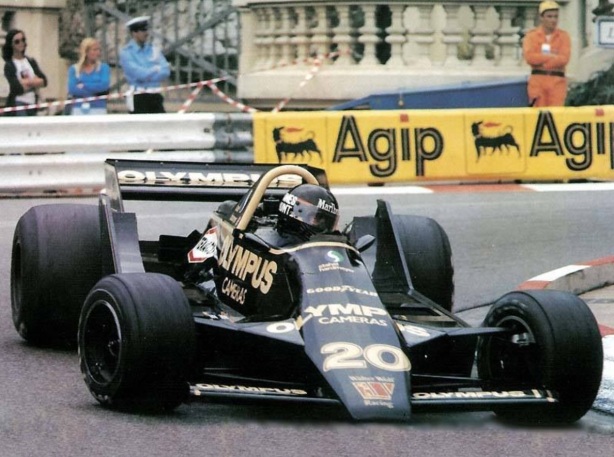
James Hunts’ Wolf WR9 Ford in his last Grand Prix, Monaco 1979. DNF with transmission failure on lap 4, the car was not Harvey Postlethwaites’ most successful design. (pinterest)
Etcetera…

MR8 ‘8761’ : cars used chisel nose unlike the earlier MR5/6. Roll hoop provides driver protection and chassis bracing, mandated from 1975 season. Car alongside is the ex Brown/ Costanzo Lola T430 then owned by Bob Minogue (Peter Brennan Collection)
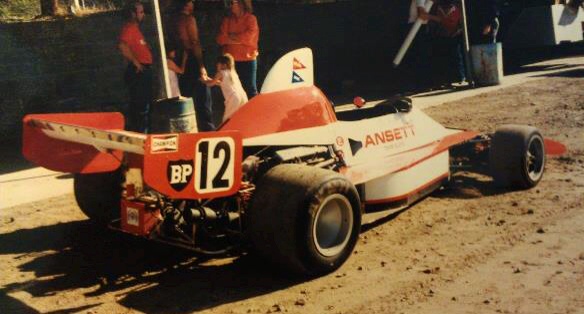
MR8 pictured is the Ex-Cooper chassis # ‘8761’ then owned by Peter Brennan. Nice profile shot shows beautifully integrated body, deformable structure, the MR8 equal if not faster than any of its imported contemporaries from 1976 to the classes end in Australia in 1982…(Peter Brennan Collection)

‘Motor’ Magazine Australia track test of the MR8 in early 1979. Racer Sue Ransom tested the car with Vern Schuppan doing the timed runs; 0-100kmh 2.9 sec, 0-160 4.9 sec, 0-240 10 sec. Standing 400 metres 9.75 sec. Top speed geared for Adelaide International Raceway 275kmh. (Peter Brennan Collection)

Credits…
Ian Smith, autopics.com.au, oldracephotos.com, Glenn Snyder RJS Collection, Pinterest, Peter Brennan Collection
‘Australias Elfin Sports and Racing Cars’ John Blanden & Barry Catford
‘Formula 5000 in NZ and Australia Race by Race’ Wolfgang Klopfer
Many thanks to both Peter Brennan and Bruce Allison for their contributions to this article
Other F5000 Articles…
Frank Matich and his cars.
Frank Matich: Matich F5000 Cars etcetera…
Shadow DN6B Dodge.
Shadow DN6B Dodge: Road America F5000 1976…
Finito…



